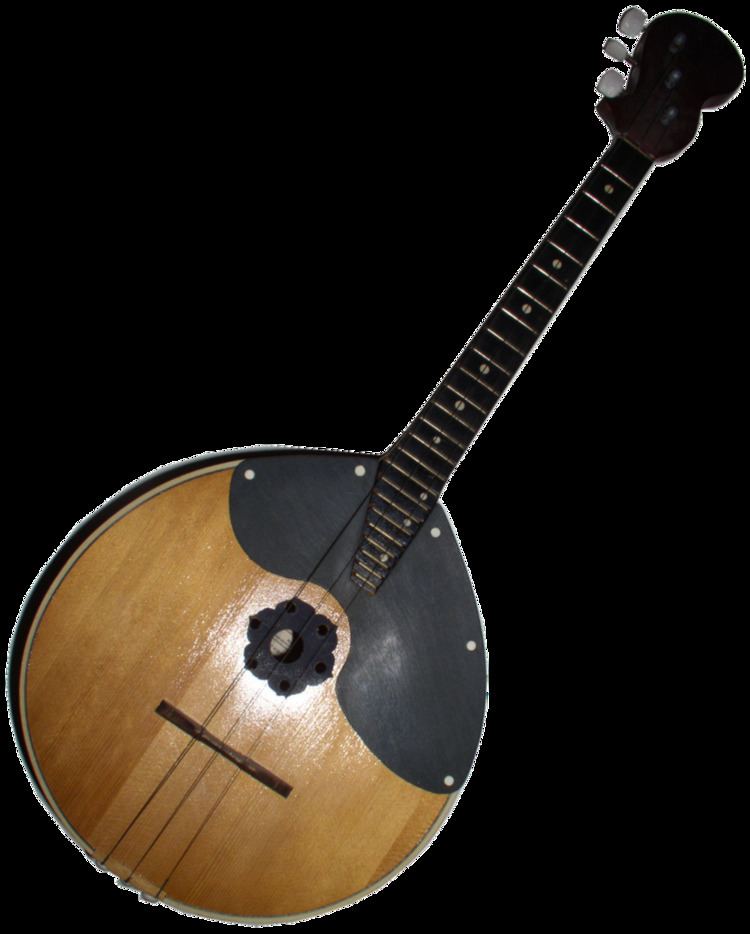 | ||
Hornbostel–Sachs classification 321.321(Composite chordophone) | ||
The domra (Russian: домра) is a long-necked Russian string instrument of the lute family with a round body and three or four metal strings.
Contents
History
In 1896, a student of Vasily Vasilievich Andreyev found a broken instrument in a stable in rural Russia. It was thought that this instrument may have been an example of a domra, although no illustrations or examples of the traditional domra were known to exist in Russian chronicles (the traditional domra was only known through numerous mentions in folklore, though examples of a related Turkic instrument, the dombra, existed). A three-stringed version of this instrument was later redesigned in 1896, patented, and introduced into the orchestra of Russian folk instruments.
The three-stringed domra uses a tuning in 4ths.
Later, a four-stringed version was developed employing a violin tuning by Moscow instrument maker, Liubimov, in 1905.
In recent times, scholars have come to the conclusion that the term "domra" actually described a percussive instrument popular in Russia, and that the discovered instrument was either a variant of the balalaika or a mandolin.
Today, it is the three-stringed domra that is used almost exclusively in Russia. It is played with a plectrum, and is often used to play the lead melody in Russian balalaika ensembles.
Orchestral instruments
The basic domra is tuned as follows:
Instruments are made in various sizes including piccolo, prima, alto, tenor, bass, and contrabass.
Performers
Tamara Volskaya is considered to be one of the leading contemporary performers on the domra. She is a Merited Artist of Russia, a Laureate of the USSR competition, and a Professor at the Mussorgsky Ural State Conservatory in Yekaterinburg, Russia. Other prominent domrists include:
